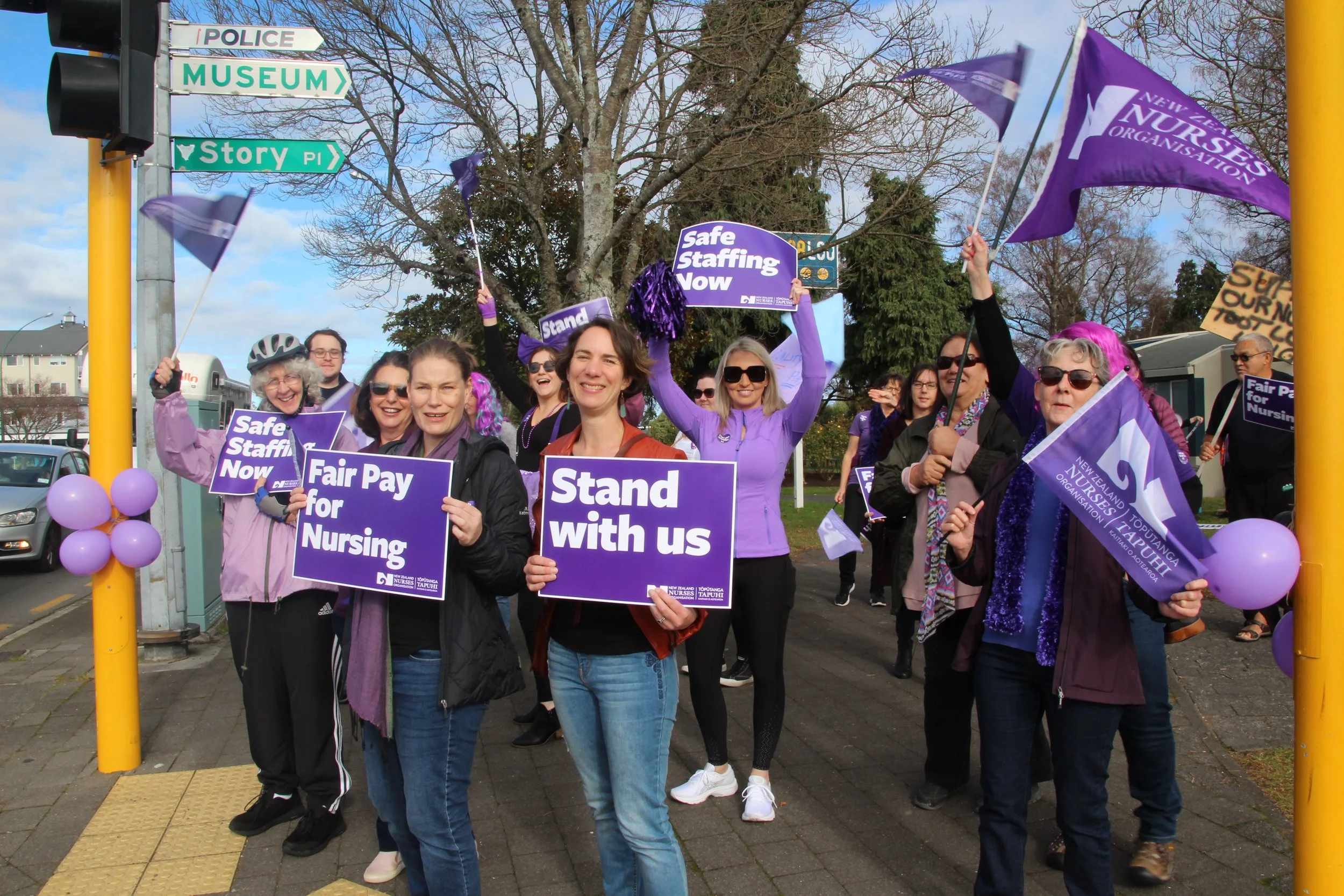Teaching and medical staff to go on strike
Lakes DHB nurses protest in Taupō in June 2021.
Primary and secondary school teachers, nurses and other health workers in Taupō are planning to join a mega strike next Thursday (October 23).
By Chris Marshall
The strike is predicted to be one of the biggest in decades – involving more than 100,000 workers.
It is expected that more than 36,000 nurses who work for Health New Zealand will walk off the job for four hours, joining more than 11,000 other health workers, about 40,000 primary school teachers, principals, and support staff and 21,000 secondary and area schoolteachers.
NZ Nurses Organisation members will strike from 11am-3pm, but the organisation has assured the public its members will still provide life preserving services.
In Taupō striking workers will meet on the field behind Taupō Primary School from 10.30am before setting off on a hīkoi at 11.30am up Titiraupenga Street, down Spa Road, along Tongariro Street to the Love Taupō sign to congregate and listen to speeches.
NZEI (New Zealand Educational Institute) Te Riu Roa member, learning support coordinator Jan Smith said the march was to seek community support from whānau and tamariki and educate the public on why unions are striking.
“It’s about our conditions of service, of what’s best for tamariki. That’s what we’re fighting for… We are striking because we think we’re worth more, but we want teacher aides in every class, because it’s our tamariki that are missing out, and we also want this government to uphold Te Tiriti in education (by reinstating funding for te reo Māori learning for education professionals).”
She said the union was looking for a turnout in the hundreds.
The NZEI campaign Kimi Haeata – Back our Future wanted to see educators valued fairly, she said.
“Ensure that our work is secure and we also want to defend quality early childhood education. The government has disestablished our Resource Teacher Literacy and RT Lit Māori positions. These are specialised people in their field that they have taken away.”
It was significant that PSA nurses and senior doctors were involved, and all the unions were supporting each other, Smith said.
“We kind of mean business. Education and health are so important in our society.”
The march might also make a detour to the Fire Station, Smith said, to acknowledge the New Zealand Professional Firefighters Union (NZPFU) whose stalled negotiations with Fire and Emergency New Zealand look set to result in a one-hour strike tomorrow (Friday, October 17) between noon and 1pm.
For secondary teachers the day of combined action follows Post Primary Teacher Association (PPTA Te Wehengarua) members refusing to teach various class levels on certain days this week – Yr 7 and Yr 9 on Tuesday, Yr 10 and Yr 8 Wednesday, Yr 11 and Yr 12 Thursday and Yr 13 Friday.
In a Radio NZ interview this week, Prime Minister Christopher Luxon called the PPTA involvement in the strike “preordained” and that people were sick of unions prioritising politics over patients, or kids in education and parents being mucked around.
In a release on Te Kawa Mataaho Public Service Commission’s website, Sir Brian Roche, the Public Service Commissioner, also questioned “whether there was ever a real possibility of the PPTA not undertaking strike action.”
PPTA president Chris Abercrombie however said a "last-minute" offer last week from the government to settle the Secondary Teachers’ Collective Agreement was “rushed and poorly thought out” and in several ways was "worse than the previous offer.”
“We need salaries and conditions that will attract people into teaching and keep our skilled and experienced teachers in the profession, particularly as we face once in a generation reforms of our secondary school curriculum and qualifications systems.
The PPTA is also planning a nationwide strike for the afternoon of Wednesday, November 5.

